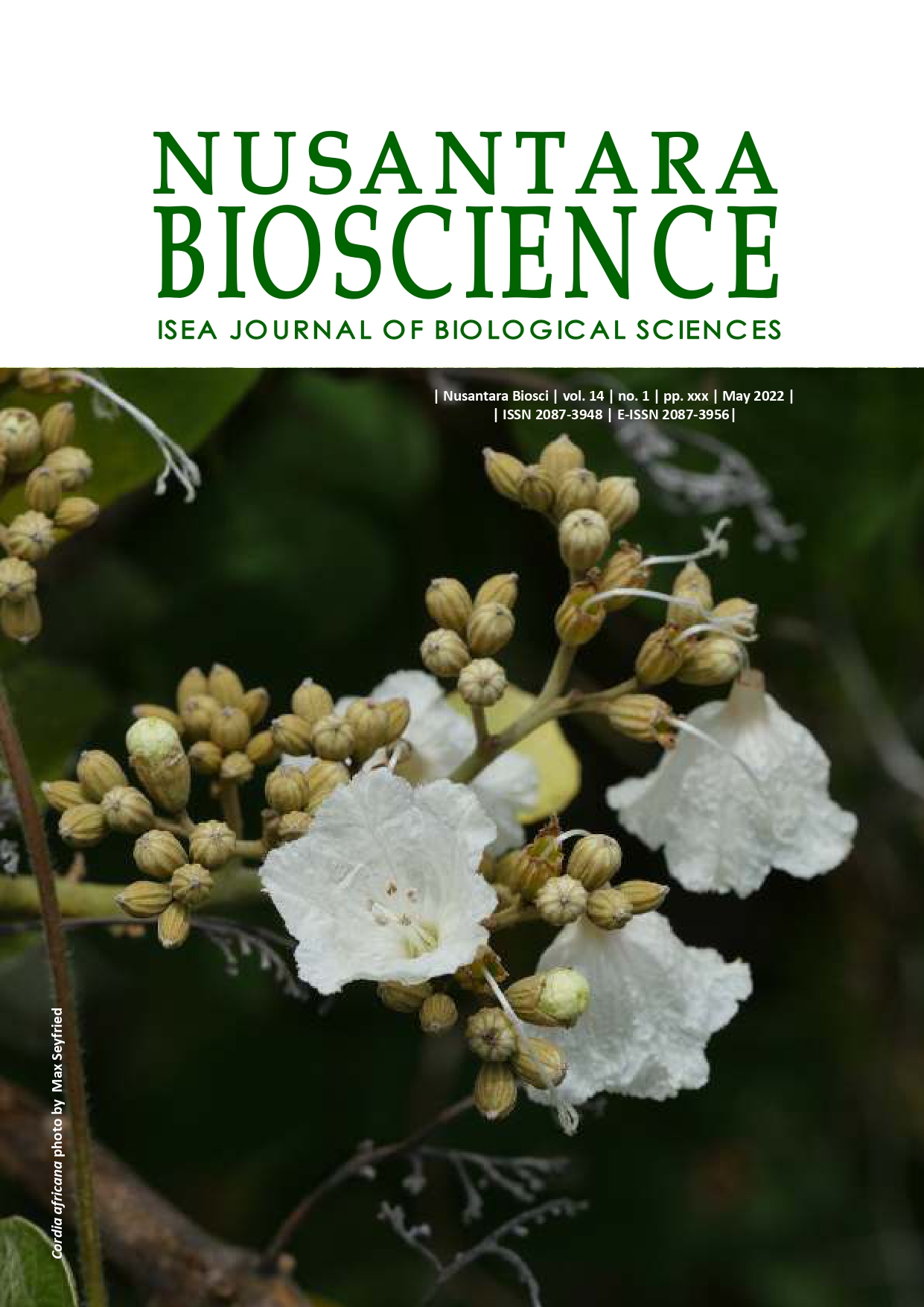Antioxidant potency of n-butanol fraction of Ficus glumosa leaves against oxidative stress induced by carbon tetrachloride in the kidneys of rats
##plugins.themes.bootstrap3.article.main##
Abstract
Abstract. Abu MS, Yakubu OE, Onuche JI, Tatah SV. 2022. Antioxidant potency of n-butanol fraction on Ficus glumosa leaves against oxidative stress induced by carbon tetrachloride in the kidneys of rats. Nusantara Bioscience 14: 40-46. The kidneys play several essential roles in the body, including regulating the water and ions reabsorb from glomerular filtrate in kidney tubules. It is controlled by several hormones such as antidiuretic hormone (ADH), aldosterone, and angiotensin II. This report presented the repairing effect of the n-butanol fraction of Ficus glumosa Delile on nephrotoxicity induced by CCl4 in rats. Rats were divided into 7 groups with 5 animals each. Groups 1 and 2 were used as normal and vehicle controls, respectively. Group 3 was induced but treated with neither extract nor standard drug. However, Groups 3, 4, and 5 were induced by CCl4 and administered with varying doses of the n-butanol fraction. Group 6 was induced by CCl4 and treated with a standard antioxidant drug. The results showed that treatments with an n-butanol fraction of F. glumosa leave and silymarin significantly (p<0.05) restored the activities of SOD, GPx, and CAT comparable to normal values, i.e., 2.10±0.07 U/L, 43.8±2.49 U/L, and 34.2±2.59 U/L, respectively. In addition, the treatments reduce the MDA level in the kidney of rats treated with an n-butanol fraction comparable to 0.34±0.05 mmol/L in the normal rats. Similarly, there was a significant (p<0.05) reduction of urea from 5.24 mg/dL to 3.5 mg/dL (standard value) in the treated groups. Creatinine significantly (p<0.05) reduced from 71.2 mg/dL in the treated groups to 43.3 mg/dL in the normal group. Electrolytes, Na+, K+, and Cl- levels in the CCl4-induced rats after administration of n-butanol fraction of F. glumosa leaves significantly (p<0.05) decreased to 137.8±2.59 mmol/L, 3.98±0.54 mmol/L, and 92.8±1.92 mmol/L respectively. The significant reversal of the rats' biochemical parameters can be ascribed to the ameliorative potency of the n-butanol fraction on methanol extract of F. glumosa leaves on the glomerular and tubular cells, which may have improved renal function in the injured kidney.
2019-01-01

